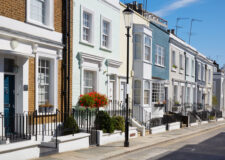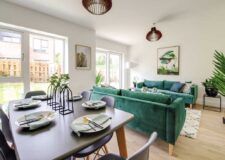Robert Nemeth explores Winston Churchill’s home
Sussex is well served by the National Trust when it comes to grand mansions with gardens such as Wakehurst Place, Petworth House and others. But a little further afield, in the north-west of Kent, Chartwell, the home of Sir Winston Churchill, is well worth a visit.

Chartwell was given to the nation in 1966, a year after the great man died. The red-brick pile was bought by Sir Winston and his beloved wife Clementine in 1922 – some years after his years at a preparatory school on Brunswick Road in Hove – as a run-down extensively-modified Elizabethan manor. The architect Philip Tilden was commissioned to remodel the building and it wasn’t until 1924 that the Churchills moved in.

Visitors are greeted with an engaged portico with Corinthian columns and egg and dart detailing. The portico looks so much like grey stone from a distance, and even up close, but it is actually very old wood. Oak is scattered around the house. A barrel-vaulted ceiling upstairs is incredible. The rooms are laid out as though the Churchill family were still living there. His trademark cigars rest in ashtrays throughout.
“Its stepped gables cascade down towards the lakes below, which Churchill himself helped to dig”
A museum area contains all sorts of Churchill-related items, including some of the plethora of gifts that he received over the years. On display are many of his uniforms and items of clothing including a velvet siren suit by Turnbull & Asser. I think that today it would be called a ‘onesie’. He even owned personalised slippers with the initials ‘WSC’ emblazoned across the front.
A criticism of Chartwell is that it is rather poor architecturally. It consists of a mix of styles and the interior layout is awkward. Some ceilings are too low; others are inappropriately high. It is not grand enough for the estate, some say. The façade is unimposing. But from the rear, which looks over the Weald, Chartwell does work. Its stepped gables cascade down towards the lakes below, which Churchill himself helped to dig.
Walls throughout the estate were famously built by Churchill during his years in the political wilderness in the 1930s, which is confirmed by a stone tablet within the extensive kitchen garden. The gardens and adjoining woods are breathtaking, but not so large as to seem disconnected from the house.
Chartwell is no Blenheim Palace, the magnificent birthplace of Churchill, but the intimate house and relaxed grounds add up to something different – the ultimate English country house.
robert@buildingopinions.com, www.buildingopinions.com



















